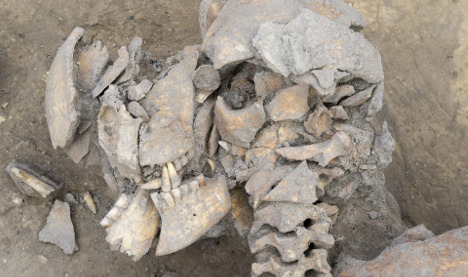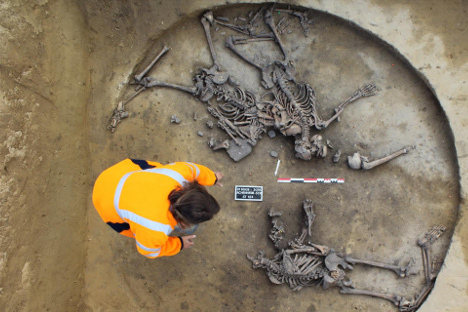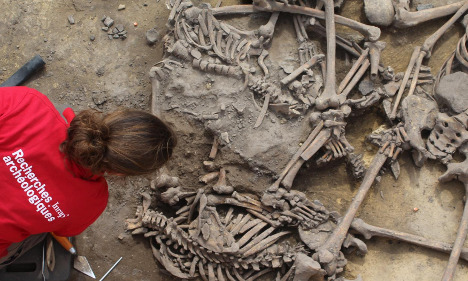France digs up bones from 6,000-year-old ‘massacre’

Archaeologists had discovered the remains of victims from a 6,000-year-old massacre in Alsace in eastern France that was likely carried out by “furious ritualized warriors”.
The bones of the 6,000- year-old genocide in Alsace, in north-eastern France have been found by archeologists.
According to a team from the National Institute for Preventive Archeological Research (Inrap), the bodies of 10 people have been found in one of 300 ancient silos, used to store grain and other food.
The Neolithic group appeared to have had violent deaths, with multiple injuries to their legs, hands and skulls.
The way in which the bodies were piled on top of each other suggested they had been killed together and dumped in the silo.

“They were very brutally executed and received violent blows, almost certainly from a stone axe,” said Philippe Lefranc, an Infrap specialist on the period.
The skeletons of five adults and an adolescent were found as well as four arms from different individuals.
The arms were probably war trophies, like those found at a nearby burial site of Bergheim in 2012, said Lefranc.
The mutilations indicated a society of “furious, ritualised warriors”, he said, while the silos were stored within a defence wall that pointed towards “a troubled time, a period of insecurity”.

It is hoped genetic testing on the bones will reveal more information about the killings, but Lefranc said one theory was that a local tribe had clashed with a group arriving from the area around modern-day Paris.
“It appears that a warrior raid by people from the Parisian basin went wrong for the assailants, and the Alsatians of the era massacred them,” he said.
However, in the long run, it was the “Parisians” who had the last laugh.
The local tribe appears to have been supplanted by the newcomers at about 4,200 BC, as demonstrated by new funeral rites, pottery, and hamlets.





